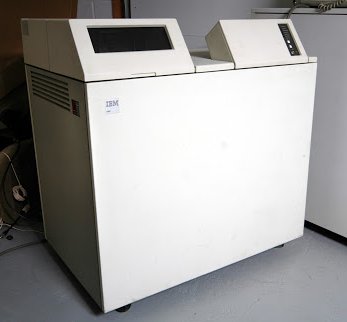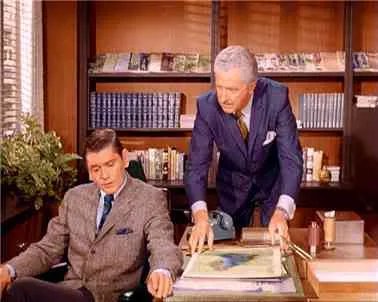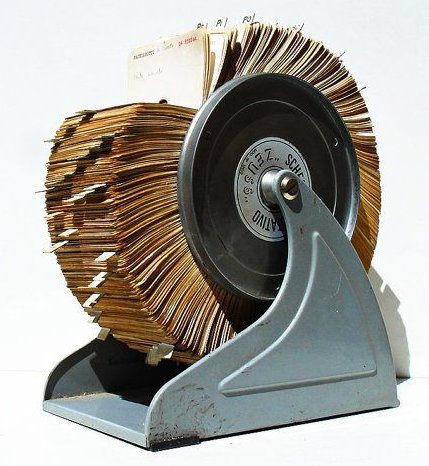TSI’s first big conversion. Continue reading
A fairly detailed description of the design of the GrandAd System can be found here. More information about IBM’s System/36 (S/36) is posted here.
The purchase of the GrandAd software system in early 1985 by Keiler Advertising (KA) was definitely a milestone for TSI. The agency was one of the two largest in the Hartford area, and its founder and president, Dick Keiler1, was highly respected in the local advertising community.
Although I had recommended to Sandy Procko3, KA’s finance manager and our liaison on the installation, that they buy two Datamasters and a hard drive, IBM had talked her into ordering the recently announced S/36 model 5362. They made the right decision.2 The Datamaster was on its way out, and the S/36 gave them better peripherals and room for growth. It also had many more subtle advantages.
Her decision was a great break for us. We would have needed to convert the system anyway. The sooner that we got started on it the better.
The only problem was that no one at TSI had ever worked on a System/36. We knew that the system had a BASIC interpreter, but we were uncertain about the compatibility of the two versions. IBM provided KA with a huge stack of documentation. I read the BASIC manual thoroughly and was relieved to find that it was very similar to what we were accustomed to. I read enough of the other manuals to get an idea about how to set up their system.
I also had to write the file definitions for each file. We had versions of these created in the Datamaster’s word processing program, but on the S/36 it was important that they be stored as Data Definition Specifications (DDS). The final preliminary step was to write a procedure for creating all of the empty data files from the DDS.
IBM allowed us to work on the S/36 in its downtown Hartford office before KA’s system was delivered. I saved our programs onto 8″ disks. I created a library for them on IBM’s 5360. Then I restored them as text files. I edited them to conform with the S/36 syntax and changed the names of all of the files to use the dot format that SSP required. I then tried to load them in the interpreter. If any lines were rejected, I fixed them and kept trying until the program loaded. Then I went on to the next program, of which there were several hundred.
When I was done with the programs and procedures, I saved the library onto diskettes, brought the diskettes to KA, and restored them. Then I executed the procedures to create all of the files. It never occurred to us that there might some day be a way of populating the data files from files that they had stored on their PC’s. I think that it was possible to save the specs table, which was a fixed-record-length file.
For nearly all of its forty-two years of its existence KA was located in a large house in Farmington, CT. It is portrayed in the photo at the right. During the period in which I was regularly vising the agency, the trees and the bushes were much smaller, and they were surrounded by wood chips. Sandy called Dick “the mulch king” of Farmington.
From the beginning, or shortly thereafter, Sandy was assisted by a younger woman named Shelly. I don’t remember her last name
Getting the code to work on the S/36 caused us fewer problems than one might imagine. By this time we understood how IBM thought about things. The fact that all of our programs followed strict procedures also made it easier to adjust to the differences. I don’t remember encountering any problems that necessitated consulting IBM or anyone else.
Here are my most vivid recollections of the installation.
- KA not only had a kitchen. It had a chef who prepared meals for clients and prospects and a dining room as well. I was never invited to one of these occasions.
- The parking lot at KA, which was in the back of the house, had a few narrow grass covered areas with skinny trees in them. I parked my Celica to the left of one of them once. When I exited I turned the wheel too soon. The mirror on the right side of the car got caught on the tree and broke off. Thenceforward there was no mirror on the Celica’s right side. Changing lanes to the right required extreme caution.
- The first few monthly closings at KA were, as always, difficult. Query/36 sometimes helped the reconciliation process. Nevertheless, on one occasion we had a discrepancy of ten cents in the accounts payable account. Sandy told me not to worry about it, but we had the tools to find it, and so I persisted. I eventually discovered that no vendor was off by a dime. Instead, three invoices were off; all three had discrepancies of more than $100, but they almost perfectly balanced one another.
- Sandy taught me that if a discrepancy was divisible by nine, it was probably a transposition error.
- On one occasion guys from the Australian national swimming team were in the office for some reason. Sandy and most of the other female staff members thought that they were very hot.
- Sandy liked the system’s reports a lot. I am pretty sure that she asked for a couple of revisions, but I do not remember the details. I do remember that, despite the fact that we spent a lot of time making sure that the results of the cost accounting system agreed with the cost accounting system, she never showed any client profitability reports to Dick. She said that that would open a can of worms.
- I went to KA once during the period in which I was weak from cat scratch fever (as described here). It happened to be on the day that KA was moving its accounting department from the ground floor to the second floor. I carried a printer or something, but the effort totally exhausted me.
- At some point in 1988, I think, Sandy fell out of Dick’s favor. She was reassigned to take charge of the scheduling of production jobs, a clear demotion. I never learned why all of this happened.
- Dick hired a woman with experience from a New York agency to replace Sandy. I tried to explain to her why the system’s method of calculating work in process (WIP) was superior to the method advocated by the AAAA, but I don’t think that she bought it.
- The last time that I went to KA Shelly was in charge of the finance department, and the New Yorker was gone. On that occasion Michael Symolon, our salesman at the time, accompanied me. Evidently he had gone on a date with Shelly once and was embarrassed about it. He stayed in the background. That was the only time that I ever remember him being shy.
When the system had been working successfully for a few months, Dick Keiler arranged to be interviewed by AdWeek New England about our system. It was a very nice article that heaped praise upon our system. It started on the front page, and it continued for several paragraphs in the middle. I had only one minor quibble: THEY NEVER MENTIONED THE NAME OF THE SOFTWARE OR THE COMPANY THAT DEVELOPED IT!!!
TSI had, for the first and only time in its existence purchased an ad. It appeared somewhat close to the article’s continuation page. However the ad was not precisely the same size as the hole that the magazine needed to fill. The way that they floated it in made it look really unprofessional.
I was quite upset about this. I wrote a letter to the editor complaining about both of these things. He called me. He did not apologize. He said that he did not think that it would have been proper to identify TSI. I reminded him that the article clearly identified the hardware vendor as IBM. What was the difference? He repeated that it just did not seem proper. He also thought that our ad looked fine. I hung up on him.
I made lemonade out of this by writing to all the prospects in the northeast about the article, providing “what AdWeek neglected to mention.” It generated a few inquiries.
1. Dick Keiler founded the agency in 1972. He started his retirement process in 1999 and left the company five years later. In 2021 he lives in Tucson Arizona. The agency went out of business in 2015. The last few years are described here.
2. I am pretty sure that in 2021 Sandy Procko resides in Westbrook, CT.
3. I was slow to come to the realization that when trying to sell systems that generated no revenue for the purchaser, it was best to strike when the iron was hot. One of our clients later told me “Christmas only comes once.” The person recommending the purchase always dreaded making a mistake. He/she most feared the prospect of telling the boss a little later that the company needed to purchase more hardware. I always thought that IBM proposed systems that were bigger and more experience than necessary, but they were more experienced at this process than I was.
4. The S/36 operating system, called SSP, used the term “procedure” for a list of commands that were to be executed sequentially. In addition, BASIC used the same term for a sequential list of BASIC commands that could be executed inside the interpreter. On the Datamaster the user was always in the interpreter, and so there was no confusion.











